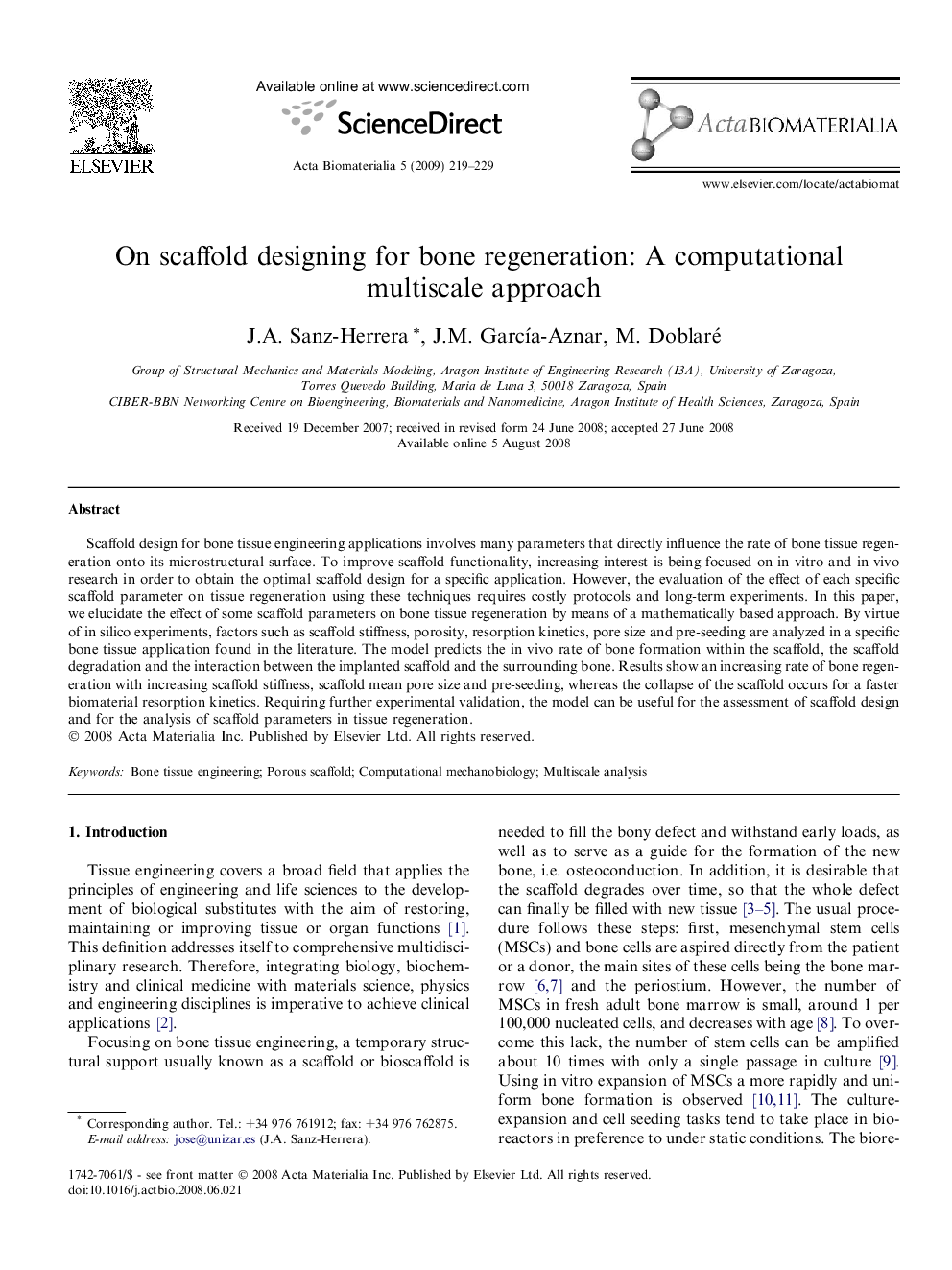| Article ID | Journal | Published Year | Pages | File Type |
|---|---|---|---|---|
| 2361 | Acta Biomaterialia | 2009 | 11 Pages |
Scaffold design for bone tissue engineering applications involves many parameters that directly influence the rate of bone tissue regeneration onto its microstructural surface. To improve scaffold functionality, increasing interest is being focused on in vitro and in vivo research in order to obtain the optimal scaffold design for a specific application. However, the evaluation of the effect of each specific scaffold parameter on tissue regeneration using these techniques requires costly protocols and long-term experiments. In this paper, we elucidate the effect of some scaffold parameters on bone tissue regeneration by means of a mathematically based approach. By virtue of in silico experiments, factors such as scaffold stiffness, porosity, resorption kinetics, pore size and pre-seeding are analyzed in a specific bone tissue application found in the literature. The model predicts the in vivo rate of bone formation within the scaffold, the scaffold degradation and the interaction between the implanted scaffold and the surrounding bone. Results show an increasing rate of bone regeneration with increasing scaffold stiffness, scaffold mean pore size and pre-seeding, whereas the collapse of the scaffold occurs for a faster biomaterial resorption kinetics. Requiring further experimental validation, the model can be useful for the assessment of scaffold design and for the analysis of scaffold parameters in tissue regeneration.
